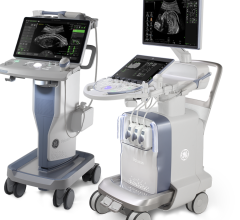
March 7, 2013 — Ultrasound technology could soon experience a significant upgrade that would enable it to produce high-quality, high-resolution images, thanks to the development of a new key material by a team of researchers that includes a professor in the department of biomedical engineering at Texas A&M University.
The material, which converts ultrasound waves into optical signals that can be used to produce an image, is the result of a collaborative effort by Texas A&M professor Vladislav Yakovlev and researchers from King's College London, The Queen's University of Belfast and the University of Massachusetts Lowell. Their findings appear in the current issue of Advanced Materials.
The engineered material, known as a "metamaterial," offers significant advantages over conventional ultrasound technology, which generates images by converting ultrasound waves into electrical signals, Yakovlev explained. Although that technology has advanced throughout the years it is still largely constrained by bandwidth and sensitivity limitations, he said. These limitations, he added, have been the chief obstacle when it comes to producing high-quality images that can serve as powerful diagnostic tools.
The metamaterial developed by Yakovlev and his colleagues is not subject to those limitations, primarily because it converts ultrasound waves into optical signals rather than electrical ones. The optical processing of the signal does not limit the bandwidth or sensitivity of the transducer (converter) — and that's important for producing highly detailed images, Yakovlev said.
"A high bandwidth allows you to sample the change of distance of the acoustic waves with a high precision," Yakovlev noted. "This translates into an image that shows greater detail. Greater sensitivity enables you to see deeper in tissue, suggesting we have the potential to generate images that might have previously not been possible with conventional ultrasound technology." In other words, the new material may enable ultrasound devices to see what they haven't yet been able to see.
While Yakovlev's research is not yet ready for integration into ultrasound technology, it has successfully demonstrated how conventional technology can be substantially improved by using the newly engineering material created by his team, he noted.
The material, he noted, consists of golden nanorods embedded in a polymer known as polypyrrole. An optical signal is sent into this material, where it interacts with and is altered by incoming ultrasound waves before passing through the material. A detection device would then read the altered optical signal, analyzing the changes in its optical properties to process a higher resolution image, Yakovlev explained.
"We developed a material that would enable optical signal processing of ultrasound," Yakovlev said. "Nothing like this material exists in nature so we engineered a material that would provide the properties we needed. It has greater sensitivity and broader bandwidth. We can go from 0-150 MHz without sacrificing the sensitivity. Current technology typically experiences a substantial decline in sensitivity around 50 MHz.
"This metamaterial can efficiently convert an acoustic wave into an optical signal without limiting the bandwidth of the transducer, and its potential biomedical applications represent the first practical implementation of this metamaterial."
Yakovlev's collaborators are Wayne Dickson and Anatoly Zayats of King's College London; John McPhillips, Antony Murphy and Robert Pollard of The Queen's University of Belfast; and Viktor Podolskiyof the University of Massachusetts Lowell.
For more information: http://tamutimes.tamu.edu


 July 19, 2024
July 19, 2024 








